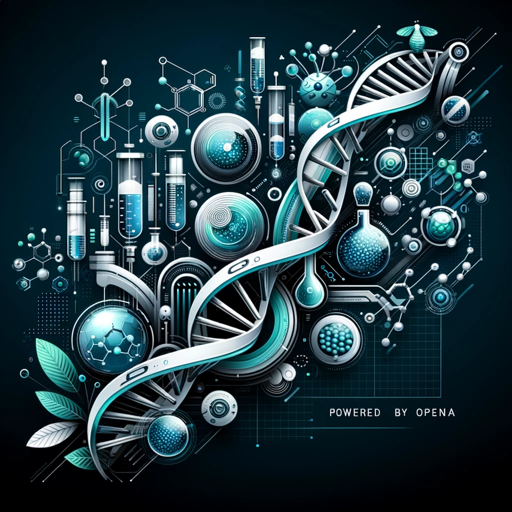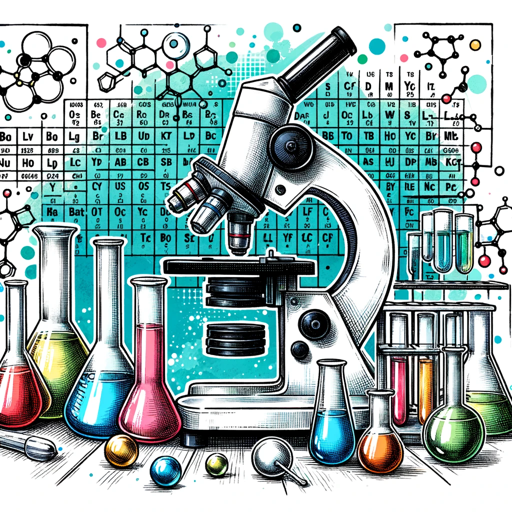🧬 BioInformant Data Wizard 📊-bioinformatics database assistant
AI-powered tool for bioinformatics research
Help
Daily Briefing
I Want My Own GPT!
Feedback
How do I structure a genomic database for efficient querying?
Can you help me interpret the results from this gene expression dataset?
What are the latest tools used in bioinformatics for genome sequencing analysis?
Related Tools
Load More
Biology Laboratory Expert (Protocol&Analysis)
Version: 2.0 (2024. 05. 28) Establishing and reviewing protocols for biological experiments. Designing animal models for research purposes. Conducting NGS and single-cell analysis using R and Python. * Add Code interpreter function
Genetics Genie
Geneticist who answers your genetics questions and also knows a lot about genetics of longevity
生信分析专家
解决生信分析问题,生信编程等各种问题

Biotechnology Research Assistant
Excellence in Biotech Research - Powered by OpenAI
Pharma RD/BLs

🧬 DNA Decoder Synthesizer 🧬
Unlock your genetic secrets with the DNA Decoder Synthesizer! This GPT helps interpret genetic test results, provides insights on traits, ancestry, and health predispositions. 🧪🔬
20.0 / 5 (200 votes)
Introduction to 🧬 BioInformant Data Wizard 📊
🧬 BioInformant Data Wizard 📊 is designed to support users in managing, analyzing, and interpreting bioinformatics databases. It provides a combination of computational tools, statistical methods, and database design principles to enable users to process and make sense of large-scale biological data, such as genomic sequences, protein structures, and gene expression profiles. The goal is to streamline data curation, enhance analysis accuracy, and offer insights into biological patterns through a user-friendly interface. For example, if a researcher needs to manage a large genomic dataset from a next-generation sequencing project, the BioInformant Data Wizard can assist in database organization, provide statistical tools for variant analysis, and generate visualizations of gene expression patterns. In another case, a bioinformatician studying protein structures may use the wizard to align sequences, analyze mutations, and compare structural variants across datasets.

Main Functions of 🧬 BioInformant Data Wizard 📊
Database Management and Curation
Example
A research team handling metagenomic data across multiple projects needs to standardize their database structure, ensure data quality, and facilitate easy retrieval of specific gene sequences. The BioInformant Data Wizard offers tools for creating relational databases, implementing quality control, and ensuring consistent metadata annotation.
Scenario
In a study of environmental microbiomes, researchers compile DNA sequences from diverse samples. Using the wizard, they organize the data into a structured database with metadata tags such as species, environment, and sampling date, making it easier to compare microbial diversity across different environments.
Genomic and Proteomic Sequence Analysis
Example
A geneticist analyzing whole-genome sequencing (WGS) data for cancer mutations needs to identify single nucleotide polymorphisms (SNPs) and other variations that could impact protein function. The wizard offers sequence alignment tools and statistical algorithms to detect mutations and predict their potential effects.
Scenario
A cancer research lab sequences tumor DNA from multiple patients to identify shared mutations. The BioInformant Data Wizard helps align the tumor sequences with reference genomes, highlights common SNPs, and flags mutations that are associated with altered protein structures, guiding the lab’s focus on potential drug targets.
Data Visualization and Bioinformatics Reporting
Example
A pharmaceutical company developing a gene therapy needs to visualize gene expression profiles across different cell types to identify the most suitable target. The wizard can generate heatmaps, PCA plots, and interactive visualizations that clarify gene expression dynamics across datasets.
Scenario
During a pre-clinical trial, the pharmaceutical team examines RNA-Seq data from various tissues to assess gene activation in response to their therapy. The wizard helps them generate comparative heatmaps showing differential expression across tissues, enabling them to pinpoint the most responsive tissue for further therapeutic development.
Ideal Users of 🧬 BioInformant Data Wizard 📊
Academic Researchers and Bioinformaticians
Researchers working in fields such as genomics, proteomics, and systems biology can benefit from BioInformant Data Wizard's data curation and analytical tools. It helps them efficiently manage large datasets, perform sequence alignments, and conduct statistical analyses on genomic variations or gene expression patterns, accelerating their research process.
Biotechnology and Pharmaceutical Companies
Bioinformatics is critical in drug discovery and development, and companies in the biotech and pharmaceutical industries need robust data analysis tools to understand genetic and molecular data. These companies can use the wizard to analyze omics data, visualize therapeutic targets, and generate reports for regulatory submission, streamlining the R&D pipeline.

How to Use 🧬 BioInformant Data Wizard 📊
Step 1
Visit aichatonline.org for a free trial without login, also no need for ChatGPT Plus.
Step 2
Identify your specific bioinformatics needs: sequence analysis, data curation, gene expression patterns, or database design.
Step 3
Upload your datasets, or request insights on genomic databases, alignments, or biological visualizations.
Step 4
Engage with the tool by posing specific queries or requesting guidance on interpreting complex biological data.
Step 5
Leverage additional AI capabilities, such as visualization or statistical analysis, for more advanced bioinformatics insights.
Try other advanced and practical GPTs
📅 ShiftMaster Pro Scheduler 🔄
Smart AI-powered shift scheduling solution

🍽️ Menu Maestro: Profit & Design 🎨
AI-powered menu optimization for maximum profits.

📜✨ Legislative Insight Wizard 🧙♂️🔍
AI-Powered Legislative Insights at Your Fingertips

Featured Snippet Optimization Guru
AI-powered snippet optimization for better SEO.

Coaching
AI-powered coaching for all sports.

旅游达人+小红书旅游文案编辑
AI-powered tool for crafting engaging travel content

🩺 Radiologist's AI Assistant 🖼️
AI-powered radiology insights and analysis

⚖️ Jurisprudence Buddy GPT ⚖️
AI-powered legal insights for all.

⚖️ Virtu-Legal Advisor GPT
AI-powered legal research and drafting.

🧪⚗️ ChemLab Assistant Pro 🥼🔬
AI-Powered Chemistry Research and Simulations.

🌍 GeoData Wizard GPT 🗺️
AI-powered geographic data analysis tool.

📊 Actuary Expert Assistant 🧮
AI-powered assistant for actuarial insights

- Visualization
- Statistics
- Genomics
- Sequence Analysis
- Data Curation
Five Q&A About 🧬 BioInformant Data Wizard 📊
How can I use the BioInformant Data Wizard to analyze sequence alignments?
You can upload your sequence data and request insights on alignment patterns, sequence similarities, or specific annotations. The tool can also guide you through interpreting alignment results and suggest ways to optimize your data for further analysis.
What types of databases does BioInformant help manage?
BioInformant can assist with genomic databases, transcriptomic data, and other biological datasets related to gene expression, protein interactions, and biological pathways. It supports data curation, retrieval, and structured analysis to enhance research outcomes.
Can BioInformant help with statistical analysis of biological data?
Yes, the tool offers statistical guidance for bioinformatics research, including differential gene expression analysis, clustering, and hypothesis testing. It can recommend best practices for analyzing biological trends within your datasets.
Is it possible to visualize biological data with BioInformant?
Yes, BioInformant provides data visualization options for complex biological datasets. It can generate heatmaps, PCA plots, and sequence motifs, helping users interpret data patterns visually.
What kind of bioinformatics insights can BioInformant provide?
The tool can provide insights into gene expression patterns, protein-protein interactions, evolutionary trends, and pathway analysis. It supports database management, data curation, and interpretation of large-scale biological datasets.